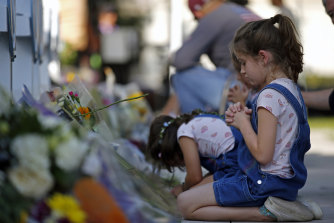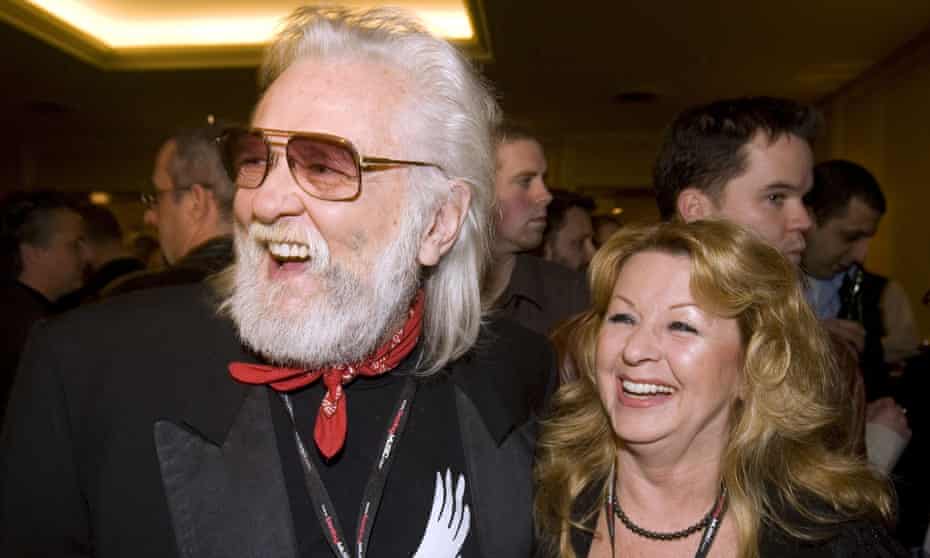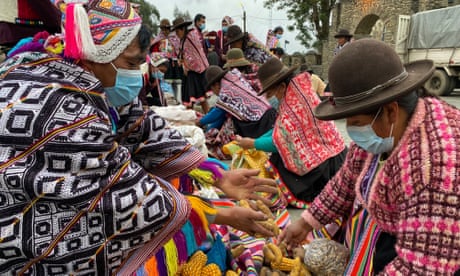Yesterday
TORONTO — A Dene filmmaker says he was "disappointed" and "close to tears" when security at the Cannes Film Festival blocked him from walking the red carpet while dressed in a pair of moccasins.

© Provided by The Canadian PressIndigenous filmmaker says he was refused entry on Cannes red carpet for his moccasins
Kelvin Redvers, a Vancouver-based producer who attended Cannes as part of a delegation of six Indigenous filmmakers, says he was refused entry to the carpet for Valeria Bruni Tedeschi’s "Les Amandiers" last Sunday because festival staff didn't approve of his traditional Indigenous footwear.
He says he was only allowed to walk the carpet if he swapped out his moccasins for a pair of formal shoes that Cannes deemed appropriate.
Redvers obliged, but he says he hopes speaking out about his experience leads Cannes organizers to rethink what counts as formal wear when it comes to representing different cultures on their red carpets.
"Whenever there's an opportunity — if there's an award show or a special event — it's really important for me to be able to bring in a bit of my Dene heritage," he said.
"My goal was to wear my suit, and my bowtie and my Dene moccasins, which are formal, they're cultural. And they're still sort of elegant and classy. I had no reason to believe that they wouldn't fit on the red carpet."
Cannes is notoriously strict about formalwear at many of its red carpet premieres – requiring a black tie for men and evening gowns for women – however, some traditional formal wear is accommodated, such as Scottish kilts and Indian saris.
The festival once outlined some of the formalwear expectations on their website, but in recent years — after a number of controversies, including one involving women wearing flats instead of heels — the official guidelines have all but disappeared online.
Before the Sunday screening, Redvers says he gathered with his fellow filmmakers to take photos in their tuxedos and moccasins. The group, who were in Cannes with the support of Telefilm, the Indigenous Screen Office, and Capilano University's FILMBA program, then headed to the red carpet.
After getting past the first security checkpoint, Redvers pulled off his pair of street shoes and stepped into his moccasins. That is when security at a second checkpoint stopped him.
Various levels of Cannes red carpet officials were brought in to assess the situation, Redvers says, while a French-speaking member of his cohort tried to explain to security, "this is cultural wear, this is traditional. They were just not hearing it."
Related video: Cannes security turned away this Dene filmmaker for wearing moccasins (cbc.ca)
"Eventually one security guard just hit his breaking point," Redvers says.
"He just switched and was ... furiously demanding immediately that I leave, in an aggressive and angry tone, saying, 'Leave, leave, you must leave now.'"
Representatives for the festival did not respond to requests for comment.
After the heated moment, Redvers decided he still wanted to attend the screening, so he took off his moccasins and went into the theatre.
"I was so disappointed, like, it was actually distracting during the movie," he says.
"I just couldn't stop thinking about not being allowed to represent my culture on the red carpet on this world stage."
"I was pretty close to tears and quite upset," he added.
After members of Telefilm and the Indigenous Screen Office complained to Cannes about the treatment the filmmakers received, Redvers says leadership agreed to meet with them and apologize for the negative experience.
"I think it was a productive meeting," he said.
"It's an educational time because they just didn't understand what moccasins were and why they were important. (They) just kind of thought of them as slippers, which is what they said a few times."
Cannes officials invited him to wear his moccasins at the red carpet premiere of David Cronenberg's "Crimes of the Future" the following night. When one security guard rejected his footwear at that screening, a higher-up staff member intervened and let him onto the carpet.
"That was probably the most satisfying moment of the festival," he says.
"To be able to rock the mocs on the red carpet."
This report by The Canadian Press was first published May 28, 2022.
David Friend, The Canadian Press
TORONTO — A Dene filmmaker says he was "disappointed" and "close to tears" when security at the Cannes Film Festival blocked him from walking the red carpet while dressed in a pair of moccasins.

© Provided by The Canadian PressIndigenous filmmaker says he was refused entry on Cannes red carpet for his moccasins
Kelvin Redvers, a Vancouver-based producer who attended Cannes as part of a delegation of six Indigenous filmmakers, says he was refused entry to the carpet for Valeria Bruni Tedeschi’s "Les Amandiers" last Sunday because festival staff didn't approve of his traditional Indigenous footwear.
He says he was only allowed to walk the carpet if he swapped out his moccasins for a pair of formal shoes that Cannes deemed appropriate.
Redvers obliged, but he says he hopes speaking out about his experience leads Cannes organizers to rethink what counts as formal wear when it comes to representing different cultures on their red carpets.
"Whenever there's an opportunity — if there's an award show or a special event — it's really important for me to be able to bring in a bit of my Dene heritage," he said.
"My goal was to wear my suit, and my bowtie and my Dene moccasins, which are formal, they're cultural. And they're still sort of elegant and classy. I had no reason to believe that they wouldn't fit on the red carpet."
Cannes is notoriously strict about formalwear at many of its red carpet premieres – requiring a black tie for men and evening gowns for women – however, some traditional formal wear is accommodated, such as Scottish kilts and Indian saris.
The festival once outlined some of the formalwear expectations on their website, but in recent years — after a number of controversies, including one involving women wearing flats instead of heels — the official guidelines have all but disappeared online.
Before the Sunday screening, Redvers says he gathered with his fellow filmmakers to take photos in their tuxedos and moccasins. The group, who were in Cannes with the support of Telefilm, the Indigenous Screen Office, and Capilano University's FILMBA program, then headed to the red carpet.
After getting past the first security checkpoint, Redvers pulled off his pair of street shoes and stepped into his moccasins. That is when security at a second checkpoint stopped him.
Various levels of Cannes red carpet officials were brought in to assess the situation, Redvers says, while a French-speaking member of his cohort tried to explain to security, "this is cultural wear, this is traditional. They were just not hearing it."
Related video: Cannes security turned away this Dene filmmaker for wearing moccasins (cbc.ca)
"Eventually one security guard just hit his breaking point," Redvers says.
"He just switched and was ... furiously demanding immediately that I leave, in an aggressive and angry tone, saying, 'Leave, leave, you must leave now.'"
Representatives for the festival did not respond to requests for comment.
After the heated moment, Redvers decided he still wanted to attend the screening, so he took off his moccasins and went into the theatre.
"I was so disappointed, like, it was actually distracting during the movie," he says.
"I just couldn't stop thinking about not being allowed to represent my culture on the red carpet on this world stage."
"I was pretty close to tears and quite upset," he added.
After members of Telefilm and the Indigenous Screen Office complained to Cannes about the treatment the filmmakers received, Redvers says leadership agreed to meet with them and apologize for the negative experience.
"I think it was a productive meeting," he said.
"It's an educational time because they just didn't understand what moccasins were and why they were important. (They) just kind of thought of them as slippers, which is what they said a few times."
Cannes officials invited him to wear his moccasins at the red carpet premiere of David Cronenberg's "Crimes of the Future" the following night. When one security guard rejected his footwear at that screening, a higher-up staff member intervened and let him onto the carpet.
"That was probably the most satisfying moment of the festival," he says.
"To be able to rock the mocs on the red carpet."
This report by The Canadian Press was first published May 28, 2022.
David Friend, The Canadian Press













